- Home
- Isaac Asimov
Asimov’s Guide To Shakespear. Volume 1
Asimov’s Guide To Shakespear. Volume 1 Read online
Asimov’s Guide To Shakespear. Volume 1
Isaac Asimov
Isaac Asimov
Asimov’s Guide To Shakespear
whatISAAC ASIMOV
Volume One
The Greek, Roman, and Italian Plays
Introduction
Those of us who speak English as our native tongue can count a number of blessings. It is a widespread language that is understood by more people in more parts of the world than any other [Chinese has more speakers than English, but it is understood on a large scale only in eastern and southeastern Asia] and it is therefore the language that is most nearly an open door to all peoples.
Its enormous vocabulary and its relatively simple grammar give it un-equaled richness and flexibility and more than make up for its backward spelling. Its hospitality to idiomatic phrases and to foreign words gives it a colorful and dramatic quality that is without peer.
But most of all, we who speak English can read, in the original, the writings of William Shakespeare, a man who is certainly the supreme writer through all the history of English literature and who, in the opinion of many, is the greatest writer who ever lived-in any language.
Indeed, so important are Shakespeare's works that only the Bible can compare with them in their influence upon our language and thought. Shakespeare has said so many things so supremely well that we are forever finding ourselves thinking in his terms. (There is the story of the woman who read Hamlet for the first tune and said, "I don't see why people admire that play so. It is nothing but a bunch of quotations strung together.")
I have a feeling that Shakespeare has even acted as a brake on the development of English. Before his time, English was developing so rapidly that the works of Geoffrey Chaucer, written shortly before 1400, had become unreadably archaic, two centuries later, to the Englishmen of Shakespeare's time. Yet now, after three and a half centuries, Shakespeare's plays can be read quite easily and with only an occasional archaic word or phrase requiring translation. It is almost as though the English language dare not change so much as to render Shakespeare incomprehensible. That would be an unacceptable price to pay for change.
In this respect, Shakespeare is even more important than the Bible. The King James version of the Bible is, of course, only a translation, although a supremely great one. If it becomes archaic there is nothing to prevent newer translations into more modern English. Indeed, such newer translations exist.
How, though, can anyone ever dream of "translating" Shakespeare into "modern English"? That would do, perhaps, if one were merely interested in the contents of Shakespeare. (It is, by analogy, in the contents of the Bible that we are interested, not in its exact syllables.)
But who can bear to have nothing more than the contents of Shakespeare's plays? What translation, even merely from one form of English into another form, could possibly reproduce the exact music and thunder of Shakespeare's syllables, and without that-
Yet in one respect Shakespeare recedes from us no matter how faithfully we follow the very syllables he uses. He wrote for all time, yes (whether he knew it or not), but he also wrote for a specific audience, that of Elizabethan Englishmen and -women. He gave its less educated individuals the horseplay and slapstick they enjoyed, and he gave its more educated individuals a wealth of allusion.
He assumed the educated portion of the audience were thoroughly grounded in Greek and Roman mythology and history, since that was part (and, indeed, almost the whole) of the classical education of the upper classes of the time. He assumed, also, that they were well acquainted with England's own history and with the geography of sixteenth-century Europe.
Modern Americans, however, are for the most part only vaguely aware of Greek mythology or Roman history. If anything, they are even less aware of those parts of English history with which Shakespeare deals.
This is not to say that one cannot enjoy Shakespeare without knowing the historical, legendary, or mythological background to the events in his plays. There is still the great poetry and the deathless swing of his writing. -And yet, if we did know a little more of what that writing was about, would not the plays take on new dimensions and lend us still greater enjoyment?
This is what it is in my mind to do in this book.
It is not my intention to discuss the literary values of the plays, or to analyze them from a theatrical, philosophical, or psychological point of view. Others have done this far beyond any poor capacity I might have in that direction.
What I can do, however, is to go over each of the thirty-eight plays and two narrative poems written by Shakespeare in his quarter century of literary life, and explain, as I go along, the historical, legendary, and mythological background.
In the process, I will, in some places, spend many pages on a single short speech which requires a great deal of background knowledge for its proper total appreciation. I may, in other places, skip quickly through whole acts which require nothing more than an understanding of a few archaic words to be crystal clear. (On the whole, I shall make no attempt to translate simple archaisms. This is done, quite adequately, in any briefly annotated edition of Shakespeare.)
In dealing with the plays, I will quote whatever passage inspires an explanation, but I will quote very little else. If the reader is reasonably familiar with a particular play, he will be able to read through the chapter devoted to it without needing to refer to the play itself. If he is not familiar with a particular play, it would probably help to keep it at hand for possible reference.
One matter over which I hesitated for a considerable length of time was the question of the order of presentation of the plays. The traditional order, as found in most editions of Shakespeare's collected works, groups the comedies first, then the histories, then the tragedies. This traditional order is very far removed from the order in which the plays were written. Thus, The Tempest, which is the first play in the ordinary editions, is the last play that Shakespeare wrote without collaboration. The Two Gentlemen of Verona, which is next, is one of the earliest.
It is possible to prepare an edition in which the plays are presented roughly in the order of their writing, something of value to those who study Shakespeare's developing techniques and ideas. This order can only be rough because it is not always certain in exactly which year a particular play was written. Worse yet, placing the plays in the chronological order of writing disrupts the histories and places them out of order as far as the historical events they deal with are concerned.
Since I am chiefly interested in this book in the historical, legendary, and mythological background of the events described in the various plays, I have decided to place the plays in the chronological order of those historical events as far as possible.
To begin with, I divide the plays into four broad groups: Greek, Roman, Italian, and English.
The Greek plays will include those that have their basis in Greek legend, as for instance, Troilus and Cressida; or in Greek history (however faintly), as Timon of Athens. It will also, however, include pure romances, with no claim whatever to any historical value, except that the background is arbitrarily set in a time we recognize as Greek-as The Winter's Tale.
The Roman plays include those that are based on actual history, as Julius Caesar, or on utterly non-historical, but Rome-based, inventiveness, as Titus Andronicus. (As it happens, even historical fiction such as The Winter's Tale and Titus Andronicus can be faintly related to actual historical events. No fiction writer is an island and no matter how he tries to draw on his imagination alone, the real world will intrude.)
The Italian plays are those set in a Renaissance Italian setting (or in nearby places such as France, Austr
ia, or Illyria) which cannot be pinned down to any specific period of time. I will present the plays in this section in the order in which Shakespeare (as best we can tell) wrote them.
The English plays include not only the sober historical plays such as Richard II or Henry V, but also those which deal with the legendary period of English history before the Norman conquest or even, in the case of King Lear and Cymbeline, before the Roman conquest.
There is some overlapping. The Greek plays set latest in time are later than the earliest Roman plays; and the latest Roman plays are later than the earliest English plays. The radical difference in scene, however, makes it convenient to ignore this slight chronological inconsistency. With that out of the way, the order of plays and narrative poems in this volume will carry us through some twenty-eight centuries of history, from the time of legendary Greece before the Trojan War, to Shakespeare's own time.
To make a reasonably even division of the book into two volumes, the Greek, Roman, and Italian plays-in that order-will be grouped into Volume One. This will leave the English plays, to which I have devoted a little more than half the book, to form Volume Two.
In preparing this book, I have made as much use as I could of all sorts of general reference books: encyclopedias, atlases, mythologies, biographical dictionaries, histories-whatever came to hand.
To one set of books, however, I owe an especial debt. These are the many volumes of "The Signet Classic Shakespeare" (General Editor, Sylvan Barnet, published by New American Library, New York). It was, as a matter of fact, while reading my pleasurable way through these volumes that the notion of Asimov's Guide to Shakespeare occurred to me.
Part I. Greek
1. Venus And Adonis
Of all Shakespeare's writings, Venus and Adonis is the most straightforwardly mythological and traces farthest backward (if only dimly so) in history. For that reason, I will begin with it.
Earl of Southampton
"Venus and Adonis" bears a dedication:
To the Right Honourable Henry Wriothesley, Earl of South ampton, and Baron of Tichfield.
-Dedication
Southampton was a well-educated youth of considerable wealth, who was presented at the court of Queen Elizabeth I in 1590, while he was still a boy in his teens. He quickly became a generous patron of poets, Shakespeare among them.
It is suggested that one of Shakespeare's early plays, Love's Labor's Lost (see page I-421) was written for a premiere performance at Southampton's house before an assemblage of his friends and guests. If so, the play must have pleased Southampton tremendously; his patronage to Shakespeare extended (so at least one report goes) to the gift of a thousand pounds-an enormous sum in those days-for the completion of some purchase. Perhaps it is no wonder, then, that Shakespeare made his dedication to Venus and Adonis florid, indeed.
Nevertheless, considering that we know Shakespeare as a transcendent genius, and that Southampton was merely a rich young man who was no more than twenty years old when Venus and Adonis was published, there is something unpleasantly sycophantic about the dedication. Shakespeare pretends to worry, for instance-
— how the world will censure me for choosing so strong a prop to support so weak a burthen;
-Dedication
Can he really doubt his own power so, or overestimate the young man so egregiously? Surely not. Can he be indulging in sarcasm? That would be foolishly risky and nothing in Shakespeare's career would lead us to suppose him a devil-may-care. He was rather the reverse.
Well then, is he merely buttering up a patron with a fat money belt? Perhaps so. It is easy to believe that this is the ordinary language of poets to patrons but it would still hurt us to suppose that Shakespeare would conform to so degrading a custom.
But, to be complete, it is also possible that there was a homosexual attachment and Shakespeare was writing out of love. This is possible. Some think most of Shakespeare's 154 sonnets were written in this period of his life; most of them seem addressed to a young man, possibly (but not certainly) to Southampton [Shakespeare's sonnets, and a handful of other short poems attributed to him, are not taken up in this book. They are primarily emotional and personal, with little or none of the type of background I am dealing with here.]. The twentieth sonnet seems to have the frankest homosexual content. It begins:
A woman's face, with Nature's own hand painted, Hast thou, the master mistress of my passion;
—lines 1-2
But it denies overt homosexuality, ending:
And for a woman wert thou first created,
Till Nature as she wrought thee fell a-doting
And by addition me of thee defeated
By adding one thing to my purpose nothing.
But since she prick'd thee out for women's pleasure,
Mine be thy love, and thy love's use their treasure.
—lines 9-14
In addition, there are a number of events in Shakespeare's plays that can be interpreted from a homosexual point of view, yet which Shakespeare presents most sympathetically. There are the close male friendships, even to threatened death, as is Antonio's for Bassanio in The Merchant of Venice (see page I-501). There is Lucius' passion for Fidele in Cymbe-line (see page II-72) and the scene in which Orlando woos Ganymede in As You Like It (see page I-571).
But too little is known of Shakespeare's life to go any further than this. Any speculations as to his homosexual urges and to the extent to which he gave in to them, if they existed, can never be anything more than speculations.
… the first heir of my invention …
Shakespeare goes on to say, in his dedication,
… if the first heir of my invention prove deformed, I shall be sorry it had so noble a godfather…
—Dedication
Venus and Adonis was published about April 1593, at which time Shakespeare was just twenty-nine. He had already established himself as a competent actor and had probably done considerable patching of old plays; notably Henry VI, Part One (see page II-640). Henry VI, Part Two and Henry VI, Part Three were mostly or entirely his and it is possible he had already written two comedies: The Comedy of Errors and Love's Labor's Lost. It is even possible that two more plays, Titus Andronicus and Richard III were in the process of production.
These works, however, were meant to be played, not read, and it was to be years before they were actually published. Venus and Adonis was the first piece of Shakespeare's writings that actually appeared in print, and it was in that sense only "the first heir of my invention."
Shakespeare seems, by the way, to have turned to narrative poetry only because of a siege of enforced idleness. The London theaters were closed between mid-1592 and mid-1594 as a result of a heightened incidence of plagues, and Shakespeare used the additional time on his hands to write Venus and Adonis and The Rape of Lucrece.
Rose-cheek'd Adonis...
The poem begins early in the day, with Adonis making ready to hunt:
Even as the sun with purple-colour'd face Had ta'en his last leave of the weeping morn,
Rose-cheek'd Adonis hied him to the chase. Hunting he lov'd, but love he laugh'd to scorn.
—lines 1-4
Adonis is the Greek version of a Semitic vegetation god. From the beginnings of agriculture, there must have been a kind of relief each year among the farmers that, after the death of vegetation in the fall, there was a rebirth in the spring. Rituals personifying this death-and-rebirth were invented and they must have been looked upon as a kind of flattering homage to Nature (or even as a hint to a possibly forgetful Nature), inducing her to continue. The feeling would surely arise at last that only a thorough-going carrying through of the ritual each year would bring about a fertile growing season and a good harvest, and upon that, life through the barren winter would depend.
In that sense, the type of myth of which the tale of Venus and Adonis is representative (though prettied-up from its straightforward origins by the sophisticated imaginations of the later classical poets), reflect
s the historic birth of agriculture. It can be tied to the great event, some seven thousand years before the Trojan War, that saw the first deliberate cultivation and harvest of wild grain in the foothills of the Zagros Mountains in what is now western Iran.
The Sumerians, about 2000 b.c., represented the agricultural cycle with a god, Dumu-zi, who died and was resurrected; a death-and-resurrection which was celebrated each year by the people of the land. The myth and the ritual were adopted by the later Babylonians and Assyrians-the Semitic peoples who succeeded the Sumerians in the land of the Tigris and Euphrates. In the Semitic language of Babylonia, the name of the vegetation god became Tammuz.
In the Tammuz myth, the god descends into the underworld after his death and all vegetation dies with him. A wailing goddess (variously described as his sister, mother, or wife) manages to rescue him. In the most familiar form of the myth, the rescuer is Ishtar, his wife or love.
The passionate rites for Tammuz were exceedingly attractive to women in particular. They found emotional relief in the wailing and utter grief that symbolized Tammuz' death and in the almost orgiastic joy that came when the priests raised the cry that he was reborn.
The stern prophets of Israel had a hard job keeping the Israelite women from joining in this pagan rite. The tale of Jephthah's daughter was possibly an attempt to solve the problem by converting the rite into a patriotic commemoration. The Israelite general Jephthah had beaten the enemy, after making a rash vow to sacrifice the first living thing that came to greet him on his return. It turned out to be his daughter, whom he sacrificed. The Bible goes on to explain: "And it was a custom in Israel, That the daughters of Israel went yearly to lament the daughter of Jephthah the Gileadite four days in a year" (Judges 11:39-40).

 The Return of the Black Widowers
The Return of the Black Widowers The Stars, Like Dust
The Stars, Like Dust Foundation
Foundation David Starr Space Ranger
David Starr Space Ranger I, Robot
I, Robot Puzzles of the Black Widowers
Puzzles of the Black Widowers Casebook of the Black Widowers
Casebook of the Black Widowers The Ugly Little Boy
The Ugly Little Boy Azazel
Azazel Pebble in the Sky
Pebble in the Sky Foundation and Empire
Foundation and Empire The Complete Robot
The Complete Robot Fantastic Voyage
Fantastic Voyage Foundation and Earth
Foundation and Earth The Naked Sun
The Naked Sun The Currents of Space
The Currents of Space Foundation's Edge
Foundation's Edge The Robots of Dawn
The Robots of Dawn Nightfall
Nightfall The Caves of Steel
The Caves of Steel Prelude to Foundation
Prelude to Foundation Nemesis
Nemesis Robot Dreams
Robot Dreams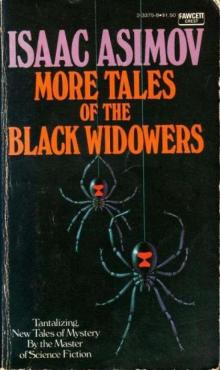 More Tales of the Black Widowers
More Tales of the Black Widowers The Complete Stories
The Complete Stories Robot Visions
Robot Visions Lucky Starr And The Moons of Jupiter
Lucky Starr And The Moons of Jupiter Lucky Starr and the Big Sun of Mercury
Lucky Starr and the Big Sun of Mercury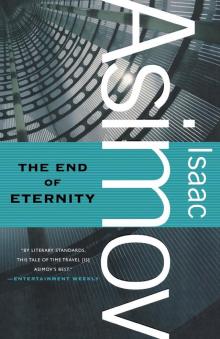 The End of Eternity
The End of Eternity The Bicentennial Man and Other Stories
The Bicentennial Man and Other Stories Lucky Starr And The Rings Of Saturn
Lucky Starr And The Rings Of Saturn Buy Jupiter and Other Stories
Buy Jupiter and Other Stories Forward the Foundation
Forward the Foundation Lucky Starr and the Oceans of Venus
Lucky Starr and the Oceans of Venus The Positronic Man
The Positronic Man The Portable Star
The Portable Star Asimovs Mysteries
Asimovs Mysteries Earth Is Room Enough
Earth Is Room Enough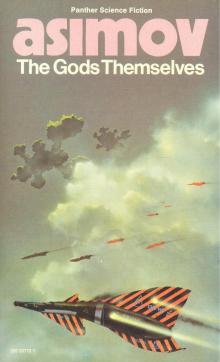 The Gods Themselves
The Gods Themselves Youth
Youth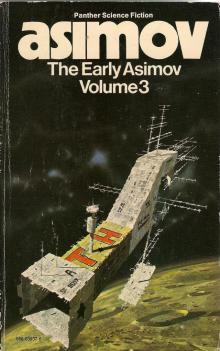 The Early Asimov Volume 3
The Early Asimov Volume 3 The Winds of Change and Other Stories
The Winds of Change and Other Stories Of Time, Space, and Other Things
Of Time, Space, and Other Things Nine Tomorrows
Nine Tomorrows Time Warps
Time Warps Robots and Empire
Robots and Empire Young Star Travelers
Young Star Travelers Fantastic Voyage II: Destination Brain
Fantastic Voyage II: Destination Brain Second Foundation
Second Foundation The Rest of the Robots
The Rest of the Robots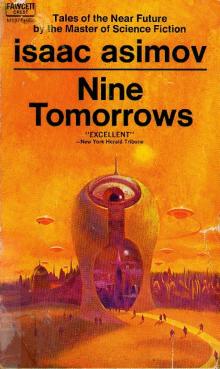 NINE TOMORROWS Tales of the Near Future
NINE TOMORROWS Tales of the Near Future Daneel Olivaw 1 - The Caves of Steel
Daneel Olivaw 1 - The Caves of Steel THE BICENTENNIAL MAN
THE BICENTENNIAL MAN David Starr Space Ranger (lucky starr)
David Starr Space Ranger (lucky starr)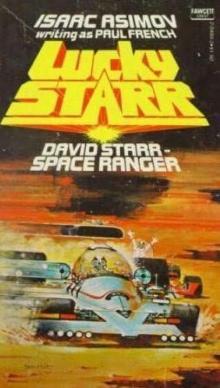 David Starr Space Ranger (ls)
David Starr Space Ranger (ls) Lucky Starr And The Big Sun Of Mercury ls-4
Lucky Starr And The Big Sun Of Mercury ls-4 Pebble In The Sky te-1
Pebble In The Sky te-1 Asimov’s Future History Volume 9
Asimov’s Future History Volume 9 Gold: The Final Science Fiction Collection
Gold: The Final Science Fiction Collection Foundation and Earth f-7
Foundation and Earth f-7 Asimov's New Guide to Science
Asimov's New Guide to Science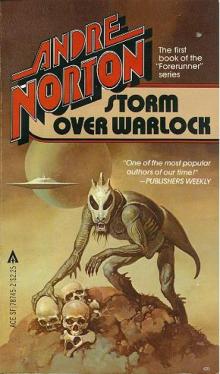 STORM OVER WARLOCK
STORM OVER WARLOCK Stars, Like Dust
Stars, Like Dust Norby The Mixed-Up Robot
Norby The Mixed-Up Robot Found!
Found! Asimov’s Future History Volume 11
Asimov’s Future History Volume 11 Second Foundation f-5
Second Foundation f-5 Asimov’s Future History Volume 15
Asimov’s Future History Volume 15 The Early Asimov. Volume 1
The Early Asimov. Volume 1 Secound Foundation
Secound Foundation Daneel Olivaw 3 - The Robots of Dawn
Daneel Olivaw 3 - The Robots of Dawn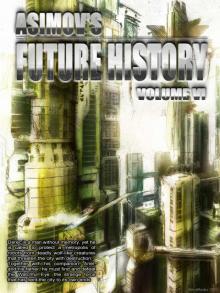 Asimov’s Future History Volume 6
Asimov’s Future History Volume 6 The Early Asimov. Volume 2
The Early Asimov. Volume 2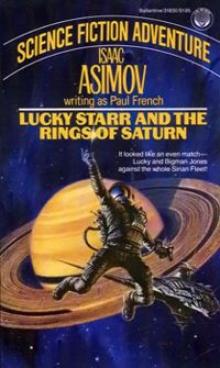 Lucky Starr And The Rings Of Saturn ls-6
Lucky Starr And The Rings Of Saturn ls-6 100 Malicious Little Mysteries
100 Malicious Little Mysteries Forward the Foundation f-2
Forward the Foundation f-2 I.Asimov: A Memoir
I.Asimov: A Memoir Foundation's Edge f-6
Foundation's Edge f-6 Lucky Starr and the Pirates of the Asteroids ls-2
Lucky Starr and the Pirates of the Asteroids ls-2 Robot City 1 & 2
Robot City 1 & 2 The Fourth Science Fiction Megapack
The Fourth Science Fiction Megapack Asimov’s Future History Volume 16
Asimov’s Future History Volume 16 The Dim Rumble
The Dim Rumble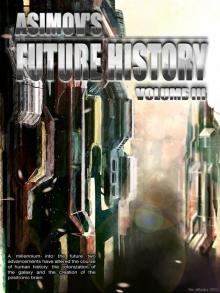 Asimov's Future History Volume 3
Asimov's Future History Volume 3 The Currents Of Space te-3
The Currents Of Space te-3 Asimov’s Guide To Shakespear. Volume 1
Asimov’s Guide To Shakespear. Volume 1 Asimov’s Future History Volume 13
Asimov’s Future History Volume 13 Asimov’s Future History Volume 12
Asimov’s Future History Volume 12 The Secret Sense
The Secret Sense Of Time and Space and Other Things
Of Time and Space and Other Things Norby tnc-2
Norby tnc-2 Norby The Mixed-Up Robot tnc-1
Norby The Mixed-Up Robot tnc-1 Misbegotten Missionary
Misbegotten Missionary Asimov’s Future History Volume 19
Asimov’s Future History Volume 19 Fantastic Voyage II: Destination Brain fv-2
Fantastic Voyage II: Destination Brain fv-2 Asimov’s Future History Volume 10
Asimov’s Future History Volume 10 Asimov's Future History Volume 2
Asimov's Future History Volume 2 Feeling of Power
Feeling of Power In the Beginning
In the Beginning The Caves of Steel trs-1
The Caves of Steel trs-1 Asimov's Future History Vol 2
Asimov's Future History Vol 2 Caliban c-1
Caliban c-1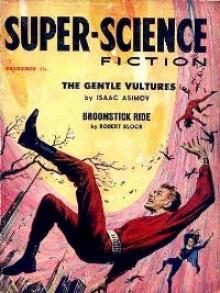 The Gentle Vultures
The Gentle Vultures Utopia c-3
Utopia c-3 Prelude to Foundation f-1
Prelude to Foundation f-1 Short Stories Vol.1
Short Stories Vol.1 Asimov’s Future History Volume 8
Asimov’s Future History Volume 8 Daneel Olivaw 4 - Robots and Empire
Daneel Olivaw 4 - Robots and Empire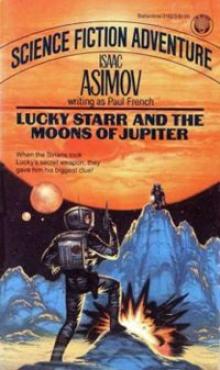 Lucky Starr The And The Moons of Jupiter ls-5
Lucky Starr The And The Moons of Jupiter ls-5 Gold
Gold Asimov’s Future History Volume 4
Asimov’s Future History Volume 4 Foundation and Empire f-4
Foundation and Empire f-4 Potential
Potential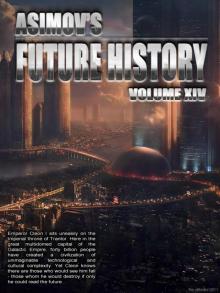 Asimov’s Future History Volume 14
Asimov’s Future History Volume 14 Asimov’s Future History Volume 7
Asimov’s Future History Volume 7 Daneel Olivaw 2 - The Naked Sun
Daneel Olivaw 2 - The Naked Sun Lucky Starr and the Pirates of the Asteroids
Lucky Starr and the Pirates of the Asteroids Foundation f-3
Foundation f-3 All the Troubles of the World
All the Troubles of the World Cleon the Emperor
Cleon the Emperor Asimov's Future History Volume 5
Asimov's Future History Volume 5 Asimov’s Future History Volume 20
Asimov’s Future History Volume 20 Robots and Empire trs-4
Robots and Empire trs-4 Profession
Profession It's Been a Good Life
It's Been a Good Life The Robots of Dawn trs-3
The Robots of Dawn trs-3 Lucky Starr And The Oceanf Of Venus ls-3
Lucky Starr And The Oceanf Of Venus ls-3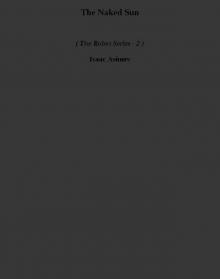 The Naked Sun trs-2
The Naked Sun trs-2 Asimov's Future History Volume 1
Asimov's Future History Volume 1